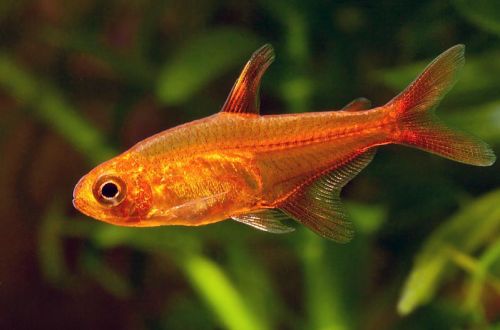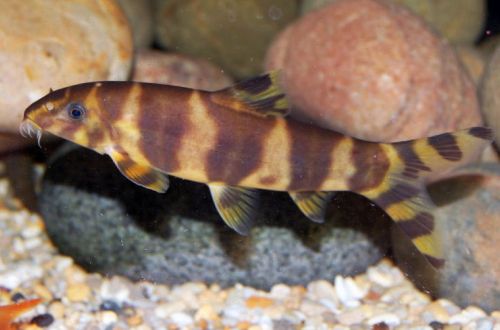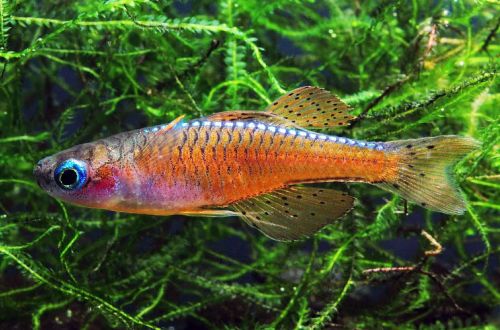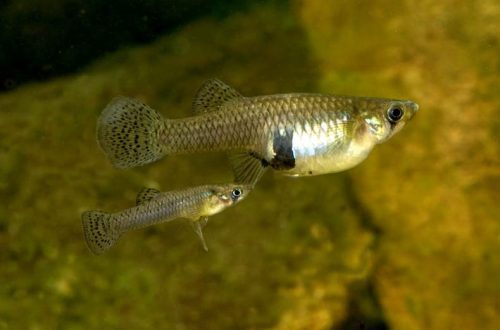
Tetra Amandy
Amanda’s tetra, Dwarf Red Tetra or Fire Tetra, scientific name Hyphessobrycon amandae, belongs to the Characidae family. The fish is named after the researcher Amanda Geri, who gave a scientific description of this species in 1987. It is considered easy to keep and breed, perfectly compatible with other freshwater fish.

Contents
Habitat
It comes from South America from the basin of the Tocantins River and its main tributary Araguay – the central regions of Brazil (the states of Tocantins, Mato Grosso and Para). Inhabits small tributaries, small streams, rivers, lakes of oxbow lakes. The natural habitat usually contains soft, slightly acidic water with a sandy substrate covered with a layer of fallen leaves and twigs.
Brief information:
- The volume of the aquarium – from 40 liters.
- Temperature – 20-28°C
- Value pH — 5.0–7.0
- Water hardness – 1–10 dGH
- Substrate type – any dark
- Lighting – subdued
- Brackish water – no
- Water movement is weak
- The size of the fish is up to 2 cm.
- Feeding – any food of suitable size
- Temperament – peaceful
- Keeping in a group of 8-10 individuals
Description
Adults reach one and a half to two cm in length. Sexual dimorphism is weakly expressed. Males and females are practically indistinguishable from each other. The color is bright solid red or orange.
Food
Undemanding to the composition of the food, will accept most popular food of the right size, designed for aquarium fish. The daily diet may consist of dry flakes, granules in combination with brine shrimp, daphnia, etc.
Maintenance and care, arrangement of the aquarium
The optimal size of the aquarium starts from 40 liters. The design uses a large number of aquatic plants, including floating ones, and dark soil. In such a contrasting environment, the fish will look most impressive. The litter from a layer of leaves of some trees will not be superfluous, which, in the process of decomposition, will give the water a chemical composition similar to natural reservoirs, and will also serve as a secondary source of food for fry – shoe ciliates can multiply among the leaves.
Keeping Amanda’s tetra is quite simple and will require the aquarist to follow a few standard aquarium maintenance procedures. The minimum set of actions is a weekly replacement of part of the water with fresh water, regular removal of organic waste (food leftovers, excrement), equipment maintenance, etc. Filtration should not be strong, excessive flow negatively affects the fish. Sometimes a simple airlift filter with a sponge is enough.
Behavior and Compatibility
Peaceful mobile fish, prefers to be in a flock of 8-10 individuals, with a smaller number it can become overly shy. Compatible with other non-aggressive species of comparable size. In nature, it often lives near Apistogramma, so they can be considered a valid option.
Breeding / breeding
The fish are easy to breed, but the preservation of fry can cause certain difficulties, since the tetras do not show parental care for the offspring and will certainly eat them on occasion. In addition, the hatched fry are very small and require microscopic food such as ciliates.
With the onset of the mating season, females scatter eggs among plants, which are fertilized by several males. If breeding is planned, then the eggs should be carefully transferred to a separate tank filled with water from the main aquarium. It is equipped with an airlift filter and a heater. A light source is not required, light coming from outside will be sufficient.
Fish diseases
Diseases inherent in this particular species of fish were not noted. When kept in suitable conditions (high water quality, balanced diet, non-conflict neighbors, etc.), health problems are not observed. The most common cause of disease is the deterioration of conditions leading to immune suppression, which makes the fish susceptible to infections that are invariably present in the surrounding area. When the first signs of an illness are detected (lethargy, exhaustion, refusal of food, lowered fins, etc.), it is necessary to immediately check the main parameters of the water. Often, the restoration of acceptable living conditions contributes to self-healing, but if the fish is too weak or has received obvious damage, medical treatment will be required. For more information on symptoms and treatments, see the Aquarium Fish Diseases section.





